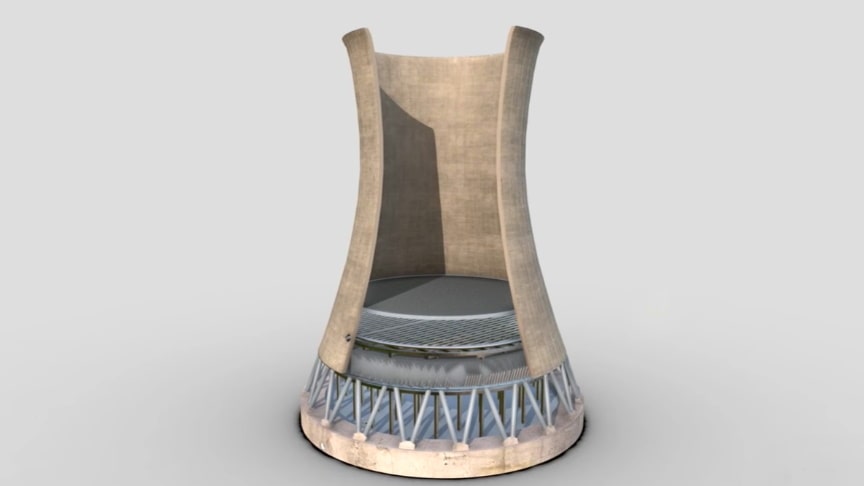A cooling tower is a heat rejection device that rejects waste heat to the atmosphere through the cooling of a coolant stream, usually a water stream to a lower temperature. Cooling towers may either use the evaporation of water to remove process heat and cool the working fluid to near the wet-bulb air temperature or, in the case of closed circuit cooling towers or dry cooling towers, rely solely on air to cool the working fluid to near the dry-bulb air temperature using radiators.
Learn how natural draft cooling towers work! This 3D animated video shows you exactly how a natural draft cooling tower works! You will learn all of a natural draft cooling tower’s main parts, how it works and some of its design features.
Cooling towers vary in size from small roof-top units to very large hyperboloid structures (as in the adjacent image) that can be up to 200 metres (660 ft) tall and 100 metres (330 ft) in diameter, or rectangular structures that can be over 40 metres (130 ft) tall and 80 metres (260 ft) long.
Advertisement
The hyperboloid cooling towers are often associated with nuclear power plants, although they are also used in some coal-fired plants and to some extent in some large chemical and other industrial plants. Although these large towers are very prominent, the vast majority of cooling towers are much smaller, including many units installed on or near buildings to discharge heat from air conditioning.











